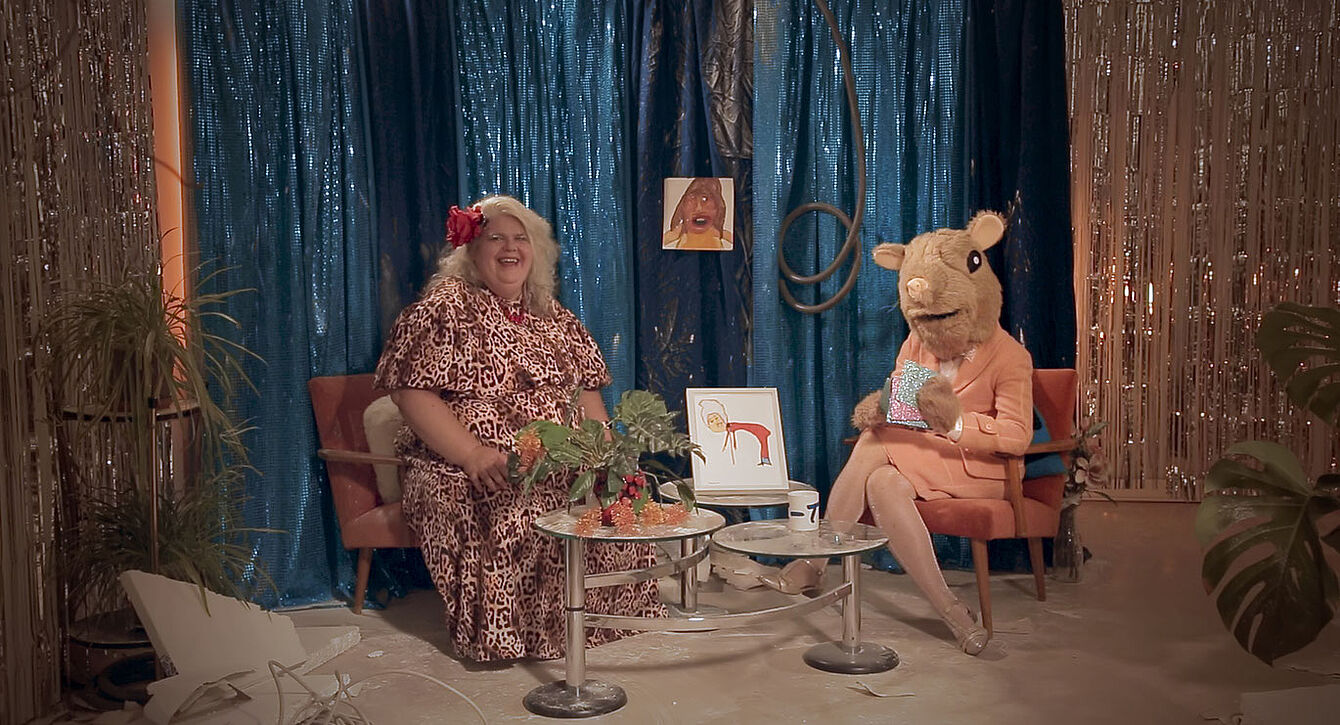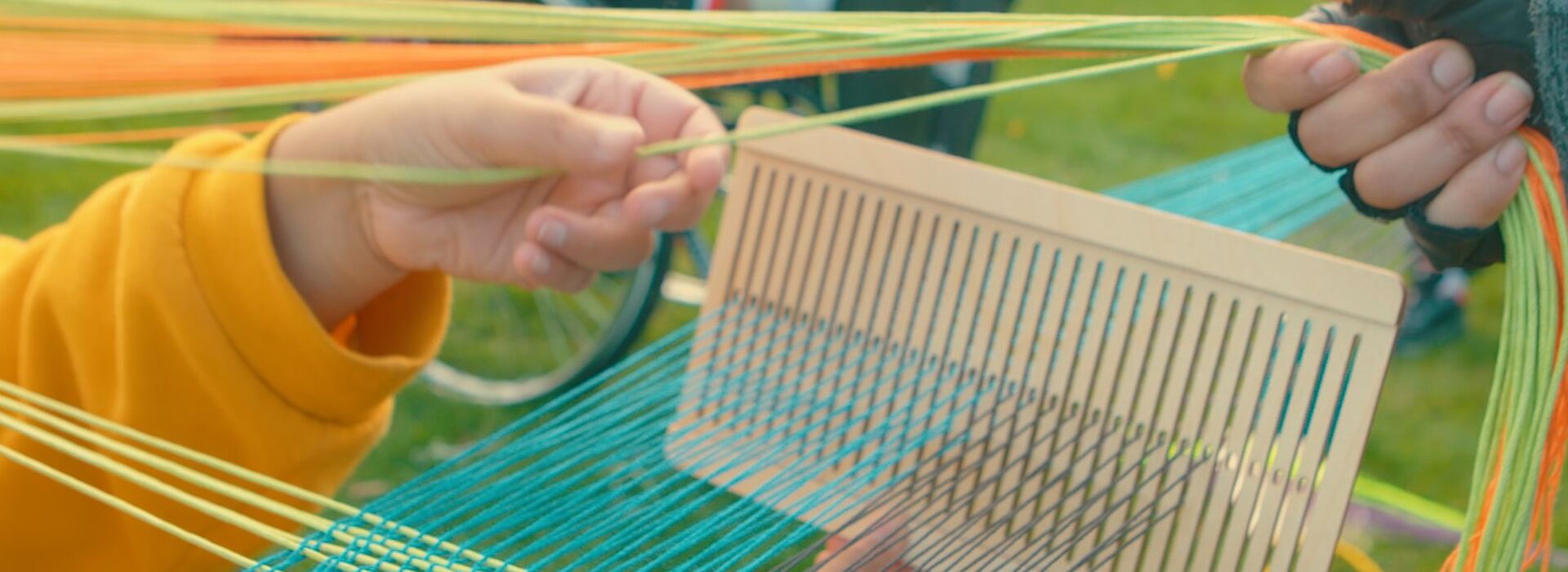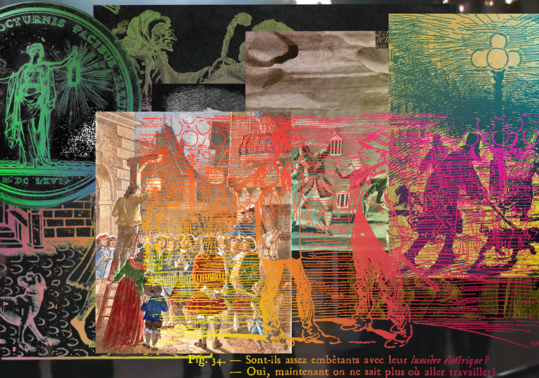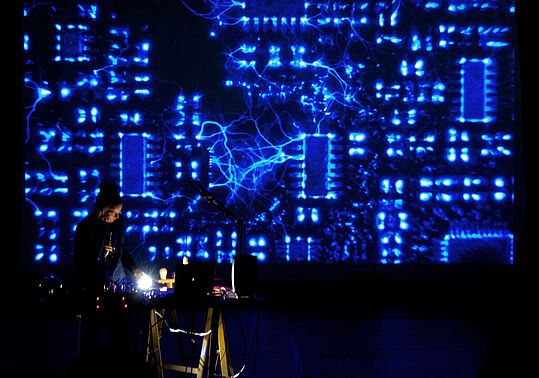queer and crip as an act of resistance
Reading time: approx. 5 minutes
In your exhibition, you try to build a bridge between your artistic and social activities and create a productive connection between them. What was the starting point for your concept? How did the idea for the exhibition come about?
Ema Benčíková: I work as a personal assistant to people with disabilities. Very early in my transition, when I was vulnerably and visibly trans, I walked through a shopping mall with my then client and friend Martin, a young man with Down syndrome. I felt empowered by how we shared our otherness and monstrosity and refracted the gazes of people around, and I wanted to follow this feeling of mutuality, trans and crip solidarity, protection and care.
The exhibition focuses on inclusion and accessibility. To what extent can and should the exhibition contribute to greater inclusion and what measures are you taking to achieve this?
Ema Benčíková: I think talking about inclusion is important in the context of human rights, workers rights, access to health care and economic precarity. But culturally speaking I do not feel like I want to be included in the mainstream. I think queer and disabled communities need their own spaces and need funding and support structures to create a culture that's authentic and reflective of our life experiences. That being said, all spaces should be accessible, be it architecturally, through lifts, ramps and bathrooms, or infrastructurally, through forms of programme, community outreach strategies and accessible language. In the exhibition Care Webs and Cuddles I tried to work through dialogical aesthetics of access and talk with the participants openly about their access needs, while also keeping in mind the needs of different communities involved. Apart from audio descriptions of video works, annotations of works in Leichte Sprache and relaxed events in crip time [events, that not only take place in the evening for example, Annot.], there will also be a calm, low sensory space in the exhibition, to rest and ground oneself.

There are also marginalized positions within the queer community, including those of people with dis_abilities. Why is it important to address these exclusion mechanisms in particular?
Ema Benčíková: Disability and queerness are constituted together with racism on a colonial patriarchal axis. They are made up of exclusions and categories that reflect the dominant capitalist and fascist narratives about (re)productivity and eugenics. I feel it is important to address these exclusions to build intersectional solidarity and warm and welcoming spaces where we can all feel seen and safe.
The terms crip and queer are both an appropriation of hurtful terms that are reinterpreted as activist terms through appropriation. In your exhibition Care Webs and Cuddles you use both terms - why was it important to you to use these terms?
Ema Benčíková: For me personally, identifying as queer helps me overcome the transphobia and discrimination I have experienced. It is a form of reclaiming my own perceived otherness. I also like the feeling of a community of outcasts it creates. And I want to share and connect with other people on the margins. Being through those terms, queer and crip, is an act of resistance.

Can you tell us more about the artists you commissioned for the exhibition? Why did you choose them and which works will be on display?
Ema Benčíková: I wanted to celebrate, archive and honor trans and crip artists that work in a community oriented way. Many of them also do social work, activism, or engaged research. Most of the artists are based in Vienna because I wanted to generate energy and exchange here and bring together people that know each other, work side by side and have relationships in the queer and disabled communities in Vienna. For example Julischka Stengele’s installation from the project "BALLAST I EXISTENZ" will be in the exhibition. In it she thematises discrimination and medical violence. There will be an interactive visualization of the structure of the Trans Mutual Care Network that provides care by trans people to trans people. But there will also be a few artists from abroad. Raisa Kabir's video recorded performance "House made of tin" for example will be on display. They created this work during the pandemic, in it an intersectional group of performers weaves a web together in a park while taking care of each other and talking about their needs and experiences.
The exhibition is called Care Webs and Cuddles. What are these care webs, why are they important and why is cuddling an essential concept in this context?
Ema Benčíková: Care Webs are a form of taking care of each other I learned about in Leah Lakshmi Piepzna-Samarasinha’s book "Care Work". They are structures of support that do not rely on funding or the state and provide care to the people that need it. They are groups of friends and allies that exchange time and energy, coming from a place of kindness and love. I think it is important to talk about alternative support structures in times when the states and institutions are becoming increasingly hostile and avoidant. But sometimes, when the world gets too grim, all you can do is cuddle.



